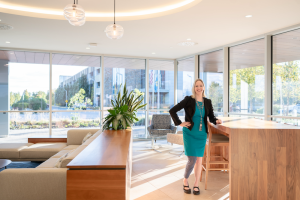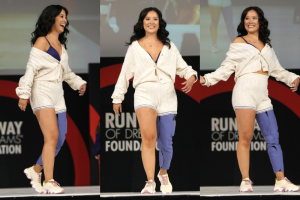
For years, Super Bowl advertising has been dominated by the usual suspects: beer, soda, chips, cars, and insurance, to name a few. This year, however, medtech company Hologic is shelling out big bucks (2022 price tag: $6.5 million for 30 seconds air time) to be part of the Big Game conversation. They’re also advertising during Olympic Winter Games coverage. A few years ago this would have been a surprise, but in 2022 it isn’t. Health and wellness is an increasingly important priority for people, and spending is increasing accordingly; however, with the pandemic, it has been difficult for people to prioritize preventative wellness visits, which is the impetus for the campaign.
According to Hologic, a “staggering number of women” missed critical cancer screenings during the COVID-19 pandemic. “Additionally, a survey conducted by Hologic in January 2022 found that nearly 50 percent of women ages 16 to 54 have not seen a medical professional for a health screening in the past year.” This is also consistent with other areas of health and wellness, including dentistry which saw declines as large as 66% in April of 2020.
McKinsey estimates that the global wellness market is more than $1.5 trillion, growing 5 to 10 percent annually. One of the key drivers of this trend is a focus on better health. According to McKinsey, “Consumers are increasingly taking their health into their own hands: we are seeing a rise in targeted, data-driven care, apps to help consumers seamlessly book their medical appointments or obtain the prescriptions they need, and devices that help them monitor their own health and symptoms between doctor’s appointments.”
Currently, most consumer healthcare spending occurs when someone is sick or injured, and that has been especially true over the past few years as consumers have avoided in-person appointments and faced budget constraints. However, as technology continues to improve, the shift away from incident-based care toward preventative care and remote monitoring is inevitable. And it is already underway, exacerbated by the pandemic which has accelerated the demand for remote medicine.
This is the future that Cionic is building. We aim to improve quality of life by facilitating mobility every day, not just during physical therapy or in-person treatment. By creating bionic clothing that can be worn anywhere, we aim to empower people to do more of what they love by getting the ongoing physical support they need. In doing so, we also hope to address some of the unseen costs of disability, like mental health. According to the CDC, adults with disabilities experience frequent mental distress almost five times as often as adults without disabilities. Physical activity is one key way to help improve mental health, but “less than half (45.2%) of U.S. adults with mobility disability reported engaging in aerobic physical activity.” By creating a sleek, wearable device that integrates seamlessly into everyday activities, the Cionic Neural Sleeve will help facilitate much desired physical activity.
On a recent episode of the Cionic podcast, Superpowering the Human Body, our guest Dr. Akshay Chaudhari discussed this shift with Cionic CEO Jeremiah Robison. He discussed the Precision Health initiative at Stanford. Conceptualized by the late Dr. Sam Gambhir, Chaudhari explained this idea in greater detail. “A successful healthcare system is where our hospitals are empty. There is no need to have a hospital because if we have sensors at home we can… monitor patients and try to come up with warning signs or triggers.” The care provider could then intervene and recommend care when it is actually needed.
We are optimistic about a future in which human health and ability is improved through a deeper understanding of human physiology via advances in technology. It’s the future our team is building at Cionic, and the future looks bright.





